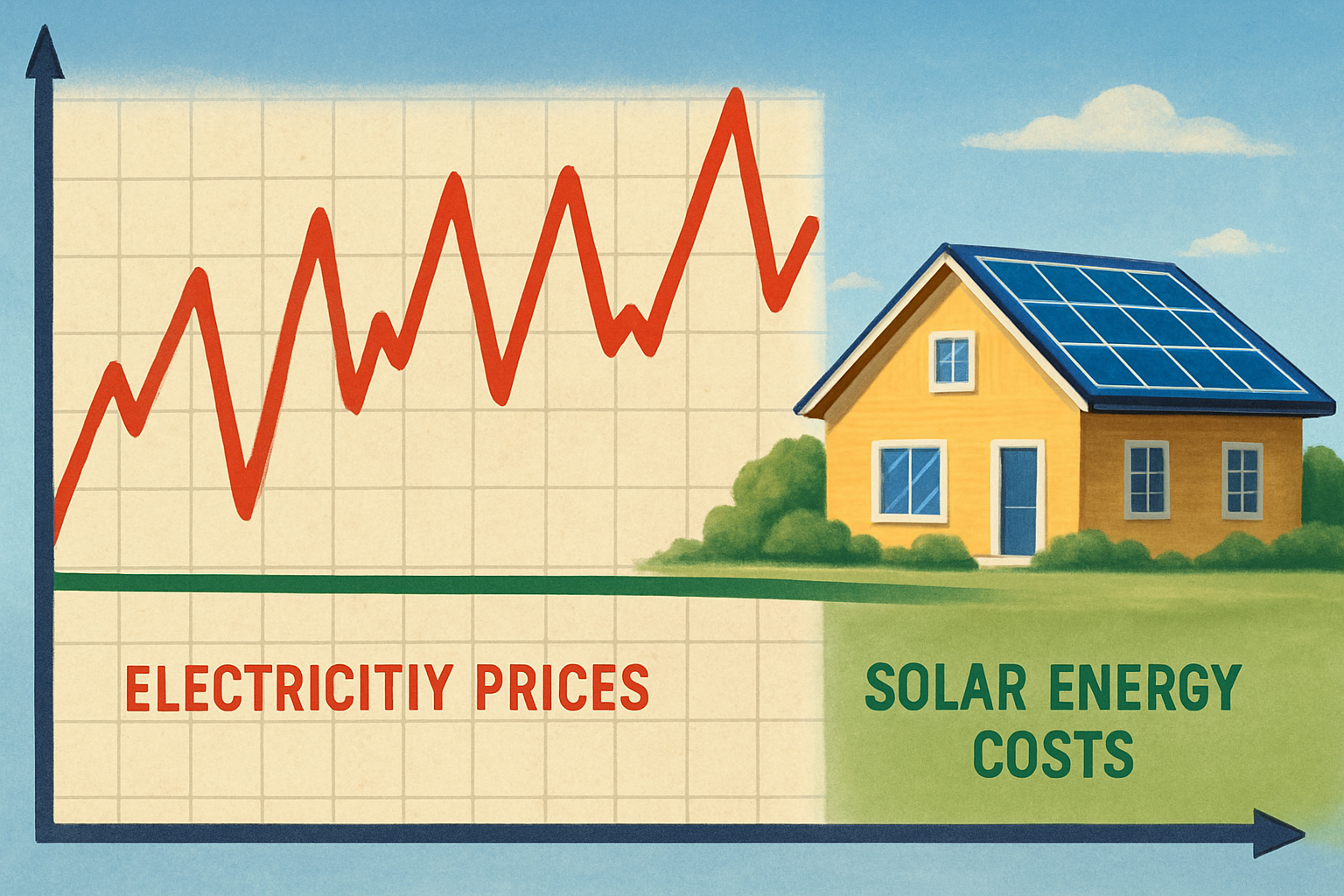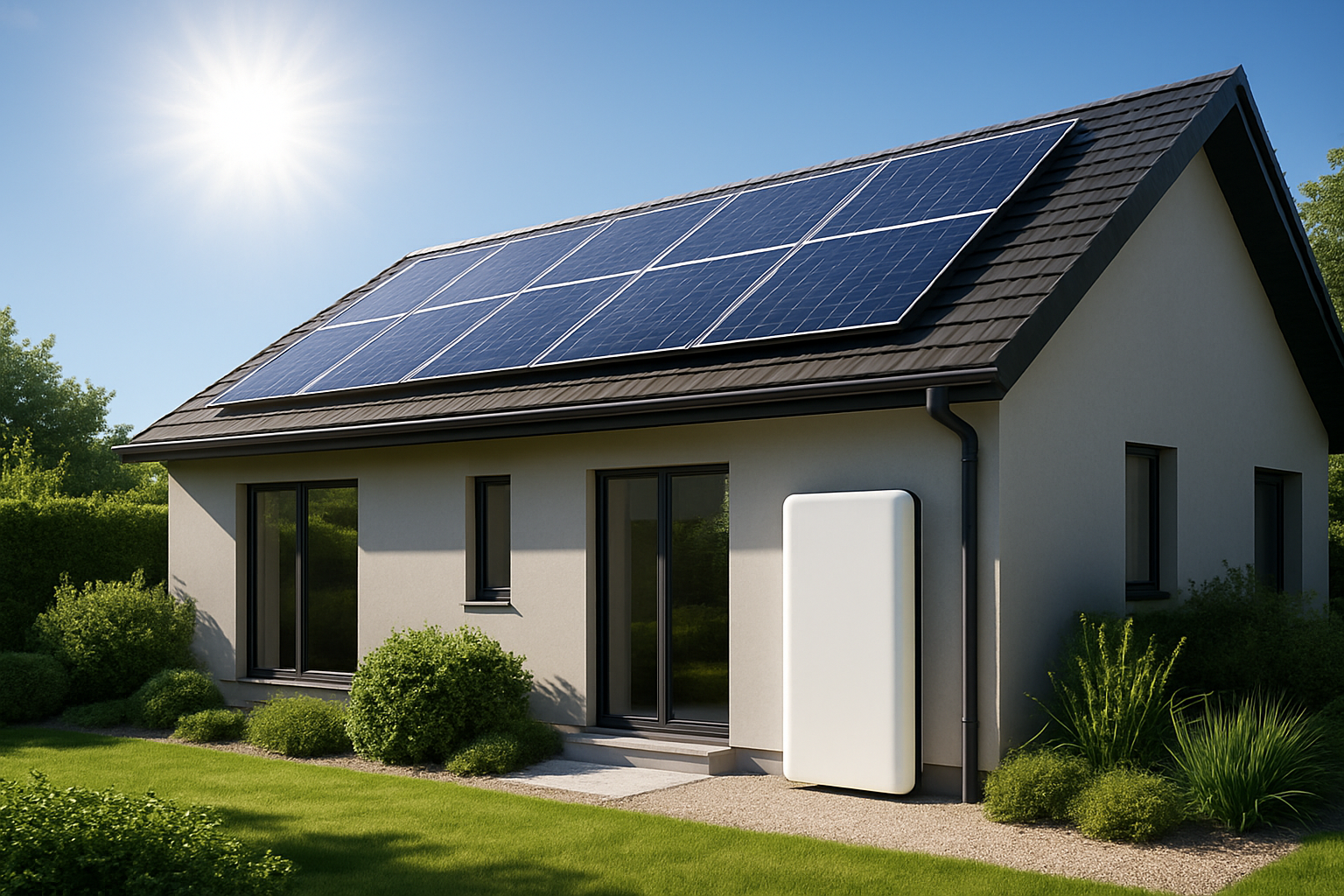The energy landscape continues to shift, with rising electricity costs and fluctuating interest rates presenting new challenges for homeowners and businesses. Many are seeking stable, reliable alternatives to traditional energy sources. Solar energy stands out as a powerful solution, offering a path to predictable energy costs and greater independence from grid volatility, even in an environment of high interest rates.
The Evolving Landscape of Energy Costs and Financing
Navigating today's economic climate requires a clear understanding of how financial factors influence energy investments. High interest rates can impact the initial financing of clean energy projects, but the long-term benefits of solar energy often outweigh these upfront considerations.
Interest Rates and Investment Dynamics
Rising base rates, implemented to counter inflation, have increased the cost of borrowing across various sectors. This has meant higher financing costs for clean energy projects, making the cost of capital a crucial variable for investors. Equity risk premiums have also seen an increase globally. For companies with significant leverage, this environment can necessitate tapping into equity markets for financing, as increased debt could affect their credit ratings. However, for consumers and businesses considering solar, the immediate impact of interest rates is often offset over time by reduced operating costs.
Solar PV Module and Project Cost Trends
The solar industry has experienced dynamic cost shifts. Solar PV modules, for instance, were approximately 20% more expensive in early 2022 compared to the previous year. These price pressures began to ease in early 2023, driven by a decline in input costs, such as solar-grade silicon and wafers, and an expansion of manufacturing capacity, particularly in Asia.
Despite these past fluctuations, the long-term outlook for solar PV costs remains positive. The International Renewable Energy Agency (IRENA) projects that globally, solar PV costs are expected to fall below USD 600/kW by 2026. Asia is anticipated to maintain a notable cost advantage, with projected solar PV costs around USD 500/kW. However, higher costs may persist in regions like Europe and North America, partly due to structural factors such as permitting delays.
While the levelized cost of electricity (LCOE) for solar PV and wind saw an increase in 2022 after years of decline, these renewable sources largely remained a more attractive option for new power generation compared to fossil fuels in most markets. For example, in Europe, the average LCOE for solar PV increased by 30% between early 2021 and late 2022. In the United States, LCOEs for solar PV also rose in 2022, but Power Purchase Agreements (PPAs) are poised for significant reductions, largely due to the tax extensions provided by the Inflation Reduction Act.
Solar Energy: A Shield Against Future Price Hikes
Investing in solar energy offers a strategic advantage by transforming variable electricity expenses into a more predictable cost. This predictability becomes particularly valuable during periods of economic uncertainty and rising energy prices.
Predictable Energy Costs with Solar
By generating your own electricity, you can significantly reduce your reliance on utility companies and their fluctuating rates. A solar power system provides a long-term hedge against future electricity bill increases, effectively locking in a portion of your energy costs for decades. This financial stability is further enhanced with the integration of a home energy storage system. Our household energy storage systems, which combine high-performance lithium batteries, hybrid inverters, and solar panels, allow you to store excess solar energy generated during the day for use at night or during peak demand periods, maximizing your savings and energy independence.
The Value of Energy Independence
Achieving energy independence means reducing your vulnerability to grid outages and rising retail electricity prices. For homes, farms, or remote cabins, off-grid solar solutions offer complete autonomy, providing reliable power where traditional grid access is limited or unavailable. Our advanced lithium iron phosphate (LiFePO4) batteries are central to these systems, offering high performance, safety, and reliability. They store the energy captured by solar panels, which is then converted into usable alternating current by our solar inverters, ensuring a consistent power supply.

Policy Support and Technological Advancements
The global push towards clean energy is bolstered by supportive policies and continuous innovation in solar and storage technologies, making solar investments even more compelling.
Government Incentives and Regulatory Frameworks
Governments worldwide are implementing ambitious policies to accelerate clean power investments. In the United States, the Inflation Reduction Act represents a significant legislative milestone, offering substantial financial support through new or extended tax credits for solar PV and storage projects. These incentives also extend to local manufacturing and grid upgrades.
The European Union is also committed to increasing renewable deployment, aiming for a minimum of 42.5% of final energy consumption from renewables by 2030, a considerable increase from the previous 32% target. Additionally, the proposed Net Zero Industry Act seeks to foster domestic manufacturing, targeting up to 40% of Europe’s clean energy technology deployment needs by 2030. These policy signals create a favorable environment for solar energy adoption and investment.
Innovations in Solar and Storage Technology
Technological advancements are continuously enhancing the efficiency and affordability of solar and energy storage systems. Our focus on lithium iron phosphate (LiFePO4) battery manufacturing exemplifies this, providing highly efficient, safe, and reliable energy storage. These batteries are a core component of our integrated energy storage systems, which seamlessly combine batteries, hybrid inverters, and solar panels to deliver comprehensive energy solutions.
Investment in battery manufacturing capacity has seen substantial growth. Capital expenditure by listed battery manufacturing companies surged to USD 9 billion in the fourth quarter of 2022. This expansion in manufacturing capacity is crucial for meeting the rising demand for energy storage solutions, which are integral to maximizing solar self-consumption and ensuring energy resilience.
Navigating Challenges and Maximizing Long-Term Benefits
While the path to a solar-powered future is promising, addressing practical challenges and making informed investment decisions are key to unlocking maximum long-term value.
Addressing Permitting and Grid Integration
Despite strong policy signals, getting clean energy projects operational at the required scale and speed faces hurdles. Permitting has emerged as a significant concern for investors and financiers, particularly for wind and grid infrastructure projects. Europe, for example, has seen substantial renewable capacity awaiting permits, with queues extending beyond set limits. Governments are actively working to streamline these processes. Other challenges include transmission bottlenecks, where existing grid infrastructure may be insufficient or of poor quality to connect new renewable projects, and shortages of skilled labor. Choosing a provider with extensive industry experience can help navigate these complexities, ensuring smoother project execution and integration.
Strategic Investment for Lasting Value
When considering solar in a high-interest environment, it is important to look beyond the initial financing costs and focus on the total cost of ownership over the system's lifespan. Solar energy systems, especially when paired with robust energy storage solutions, provide substantial savings on electricity bills, increased property value, and insulation from future energy price shocks. Our integrated energy storage systems are designed for reliability and scalability, empowering you to achieve true energy independence and secure your energy future for decades.
A Sustainable Energy Future
The long-term outlook for solar energy remains compelling, even with the current landscape of high interest rates. Solar offers a tangible path to reducing electricity expenses, enhancing energy security, and contributing to a more sustainable future. By embracing these advanced energy solutions, you gain predictable energy costs and the resilience needed to thrive in an evolving energy market.
Disclaimer: This content provides general information and does not constitute financial or investment advice. You should consult with a qualified professional for advice tailored to your specific situation.





Leave a comment
All comments are moderated before being published.
This site is protected by hCaptcha and the hCaptcha Privacy Policy and Terms of Service apply.